#a.d. 14th century
Explore tagged Tumblr posts
Note
What might be a good way to design a wheelchair in a medieval fantasy setting? The issues being that it seems to generally be a no-no to make a walking chair with legs as a wheelchair replacement, and the fact that terrain in that kinda setting is not all that friendly to wheelchairs, with dirt/mud paths, cobblestones, etc.
Hello, thank you for your ask! Please note I’m not a historian, just someone who’s done a lot of research. If anyone on Tumblr wants to add anything they know about the subject that I didn’t cover, feel free!
I’m going to start with the terrain before I get into the wheelchairs, and to start, a wheelchair can definently get over dirt and cobblestone. Even back before paved roads people needed smooth roads in order to transport carts, and even Rome had very well maintained cobbled roads in 300 A.D. to make transport as efficient as possible. There are, of course, uneaven or poorly maintained cobblestone paths, and those would certainly be an issue. If your story takes place in an area with uneaven stone roads, I’d recommend looking into manual hiking wheelchairs for design inspiration. Dirt paths shouldn’t pose as much of an issue either, unless they’re like covered in roots, plants, mounds, etc, but a well traveled dirt path should be packed well enough to not be an issue. Mud can pose an issue, but even dirt roads with hard-packed dirt from heavy foot traffic should have much more shallow puddles and less loose mud than regular loose dirt would. If your character likes in a particularly wet/rainy area I’d recommend looking into beach wheelchairs and manual all-terrain wheelchairs. Otherwise, your character should be fine on ancient roads! Now, onto ancient chairs.
The medieval ages span quite a long time, from the 5th century A.D. to the 14th century, and wheelchairs have been being created for that entire time. While many other disability aids were also being used during that time, I’m going to focus on wheelchairs and wheeled aids so I don’t make this too long, and because that’s what was asked. A quick note is that the first self propelled wheelchair was made by a watchmaker named Stephan Farffler in 1655 [pictured below], so if you want your character(s) to be able to propel themselves you’re going to have to take some creative liberties. [Note: Stephan’s chair was probably very useful for getting over uneaven terrain, with its three wheels and low center of gravity making it harder to tip.]

Records show that Greece was one of the first countries to develop wheeled-aids. The first instance of the Greeks using something similar can be found on a vase from 530 B.C. depicting a child on a bed with wheels being taken outside. Now there isn’t much surviving evidence of ancient Greek mobility aids, but there have been Greek temples found with both stairs and ramps, which imply people were being wheeled into temples fairly often [source]. There have also been vases imagining Triptolemus on a wheeled chair since 400 B.C., though it seems like imaginative work rather than something accessible to the public considering the chair doesn’t look like it could stand upright? But then again I’m not a historian and it’s possible a wealthy disabled person at the time took inspiration for what their chair would look like, or vise versa.


The first record of a wheelchair in China is found on a stone carving from 525 A.D. showing a wealthy man in a custom chair. For those with less money, records show they had been using wheelbarrows to transport disabled people since 200 A.D., and this form was definently more common for the average person who didn’t have money for a custom chair. [I unfortunately couldn’t find artwork depicting someone being carried in a wheelbarrow during this time, every picture I found was from the 1900’s and sooner, but feel free to look them up for inspiration.]
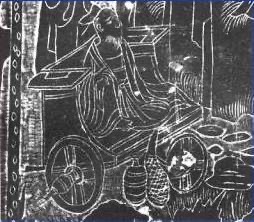

Wheelbarrows were then brought from China to Europe in the 12th century and were also used to transport people, as well as having the design changed.
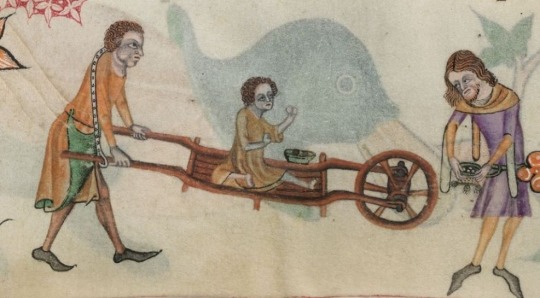
In 1595 King Phillip II of Spain received the first clearly recorded wheelchair after becoming bedridden with gout. Unlike the other chairs it had the ability to have a reclining headrest and adjustable footrest. This chair was definently designed more for confort than practicality, as the king probably wouldn't need to travel any unkept roads like a poor person would.

Wheelchairs developed way more during the 18-19th centuries, and you can always look there for ideas if you want your character to be more independent.
I hope this was all helpful!
Mod Rot
#anonymous#mod rot#wheelchairs#historical setting#disability history#historical reference#long post#mobility aids
277 notes
·
View notes
Text
Okay so, I'm getting increasingly confused over the timeline of when Aziraphale and Crowley have met over the ages.
Since I'm writing a S3 fic with lots of flashbacks, I figured that I needed to have a concrete and canon timeline so I don't end up accidentally writing a meeting when there shouldn't be one (ie when Crowley was asleep in the 14th century), and I cannot for the life of me find one that has S2 in it so I present to you:
The Nice and Accurate (hopefully) Timeline of Aziraphale & Crowley and their many meetings throughout the ages.
By Yeahthatswhatimtolkienabout.
Pls let me know if I've missed anything.
Before time was invented - God created the universe.
Before the Beginning - Our dynamic duo meet for the first time, as Crowley creates a Nebula with Aziraphale's help.
After The Beginning (the bible never gave dates for this kinda thing) - Crowley saunters vaguely downwards towards hell with the others who are cast out.
4004 B.C. - Eve is tempted by the Demon Crowley (in snake form) to eat the forbidden fruit. This is the first time we see Crowley in his demon form and the first time he (as a demon) meets Aziraphale, well - that we know of anyway.
3004 B.C, Mesopotamia - OI SHEM! Aziraphale and Crowley meet and watch as Noah gathers the animals two by two onto the ark.
2500 B.C, Uz - Aziraphale and Crowley work together to save Job's children from being killed. Aziraphale lies to heaven and fears he will be taken to hell. Bildad the Shuite is a babe.
33 A.D., Golgotha - Aziraphale and Crowley witness the crucifixion of Jesus. Crowley remarks that he 'showed Jesus the kingdoms of Earth'.
41 A.D., Rome - Aziraphale tempts Crowley to Oysters.
537 A.D., the Kingdom of West Essex - Knight of the table round, Sir Aziraphale encounters Crowley as the Black Knight. This is where the 'deal' is first raised.
1301 A.D - 1400 A.D - Crowley sleeps through the 14th century.
1601 A.D The Globe Theatre, London - Aziraphale and Crowley meet at a production of Hamlet. They have been participating in the 'deal' for some time now.
1650 A.D - Aziraphale does the apology dance for the first time.
1793 A.D, Paris, France - Aziraphale is about to be beheaded, but Crowley intervenes and saves him.
1800 A.D Soho, London - Aziraphale opens his bookshop and Crowley successfully prevents him from returning to heaven at Gabriel's orders, by fooling him with some mannequins.
1827 A.D Edinburgh - Crowley and Aziraphale meet Elspeth, a body snatcher, and are caught up in her endeavours.
Aziraphale then does not see Crowley until...
1862 A.D London's St. James Park - Crowley asks Aziraphale for Holy Water, as a 'just in case'. Appalled, Aziraphale leaves.
1941 A.D London - Aziraphale is caught up in a bait and switch with some Nazis. He is rescued by Crowley. One thing leads to another and Aziraphale is a magician in a show, the Nazi's become Zombies and to cut a long story short, it ends with the pair dining together.
1967 A.D Soho, London - Crowley meets Lance Corporal Shadwell and plans to steal Holy Water from a church. Hearing of this, Aziraphale appears to him in his Bentley and delivers a flask of it to him.
2008 A.D Soho, London - Crowley and Aziraphale meet to discuss the Antichrist and plan to become his godparents to raise him as a 'normal' child, neither influenced by heaven or hell.
2008 A.D - 2019 A.D - Crowley disguises himself as Nanny Ashtoreth and Aziraphale, as the Gardener Brother Francis, and the two try to influence Warlock.
2019 A.D - The events of the first season of Good Omens happens, our pair prevent Armageddon and live happily ever... wait what, a second season?
2020 A.D - 2022 A.D - Lockdown happens. This is where the 'Lockdown' video takes place.
2023 A.D - Pain, otherwise known as Season 2, happens.
I really hope this helps some of you with fic planning and stuff. I was getting really confused over when they met and when certain things started happening, that I needed a record for myself - then thought I should share it!
Edited to add: Thank you for the comments, pointing out some things I've missed! I've added lots of them in now. I've only really included events where the two have met (either in show or in book), and have not added in the bits that Neil Gaiman has added (such as the Wild West scenes etc). If there is a script book for S2 and they are in there - I will come back and add them in.
For a timeline that goes over other significant events in their history, please check out the amended version by @graviitron - they've added some cool bits in there, so thank you! 🥰
#good omens#good omens 2#aziraphale#good omens season 2#crowley#aziracrow#good omens season 2 spoilers#good omens season 1#good omens timeline#GO#GO S1#GO S2
240 notes
·
View notes
Text
Fork with heart—Qasr-i Abu Nasr, now Iran, 6th or 7th century CE

According to the Met: "This bronze tool, or fork, has two long prongs and is attached to its handle with a heart shaped decorative element.
The small town and fortress of Qasr-i Abu Nasr is located near Shiraz in southern Iran at a strategic point at the intersection of defensive mountains, available water sources, and along roads entering the Shiraz plain. The site was excavated by archaeologists from The Metropolitan Museum of Art for three seasons from 1932-1935. The town was occupied, at least intermittently, from the Parthian period (3rd century B.C.–3rd century A.D.) to the Muzaffarid period (13th-14th century A.D.). The major occupation, including the extensive fortress, dates to the Late Sasanian period (6th-7th century A.D.).
The eastern part of Qasr-i Abu Nasr is a raised plateau of a roughly triangular shape. During the Sasanian period the plateau was fortified by a wall and densely occupied. Archaeological finds from the fortress show a wide range of defensive and administrative practices."
8 notes
·
View notes
Text

I have two Barbie dolls that I keep on my shelf because when I was going through my old box of Barbies, I remembered these as two of my favorites and couldn’t bear to keep them in an out-of-sight box in the basement. I seldom pay them any thought, yet it is extremely clear to me that their names are Juliet and Daisy, and they have a beautiful lesbian love story that somehow transcends time because Daisy is from the 1920’s and Juliet is from the 14th century A.D. I never even made them kiss as a little kid so I don’t know how I’m just seeing it now but I’m very happy for them regardless.
The other good part to this is that they’re both collectible Barbie dolls that would be pretty valuable if I had kept them in the box. Unfortunately when my grandmother gifted me her aunt’s Barbie collection, she didn’t take into account how little a five year old cares about the stock value of collectible items as opposed to how much one loves cutting Barbie hair. So that is what I did. The Juliet half of the “Romeo & Juliet” Barbie set got a snazzy new haircut after being removed from her box, and “Dance ‘till Dawn: Great Fasions of the 1920’s” Barbie lost her shoes, stand, hairpiece and boa. The only one I still have in the box is the “Christian Dior 50th anniversary” Barbie, which is thankfully the most expensive.
7 notes
·
View notes
Text

The Brahma Jinalaya, sometimes called as the Greater Jain Temple of Lakkundi, is an early 11th-century Mahavira temple in Lakkundi, Gadag District of Karnataka state, India.
The town of Lakkundi was known as Lokkigundi in medieval times. It was of considerable importance during the 11-12th century A.D. Western Chalukya rule, and hosted a number of Jain and Hindu temples. The Brahma Jinalaya was built in 1007 CE
The temple includes several inscriptions that helps date this temple and the gifts it received before the 14th-century. When mentioned, the temple is called Brahma Jinalaya of Lokkigundi in these historic inscriptions.
3 notes
·
View notes
Text
Hold up. I'm watching the analysis on the Basilisk games and I noticed something.
In the opening of the SNES version, the land is called Mycenae, and it takes place during 1437 A.D. Now the original Basilisk in this game was killed 100 years before the game took place, so likely 1337. There is a glyph seal on the ground that marks this place. There is also an Obelisk that is warm to the touch and emits a hum. Scratch, the only one to survive the slaughter by being passed over by the knight, mentions a woman that he was "sweet on" once, and then she betrayed him.
Well, I was doing some digging on the name of the kingdom, Mycenae. Well, if my findings are to be correct, it was an acropolis that dates between the 14th - 13th century BCE. The mythology part is what interests me on this though. It's stated that Perseus was the founder of the city, and named it either because his sword scabbard hit the ground, and was considered a good omen, or because he found a water spring by a mushroom.
Both of these are elements of the story, with the 'good ending' showing a sword discarded on the ground, from where the Knight cuts himself in half. But the Healing Water is important in the 2000 version, being the center of what would've been the main quest.
Now I mention the woman earlier, who betrayed Scratch and was later killed by The Knight (which actually makes a theory that Scratch and the Knight are the same entity). The Knight can talk to the ghost of the woman, where she berates him. I have a feeling this is a loose reference to the Trojan War, and the woman is supposed to be Helen, since King Agememnon was the one who led the Greeks to Troy to recapture Helen. Of course, Helen was the wife of Menelaus, who was the king of Sparta at the time, and became despised when she was brought back to Sparta (though I found that there were cults centered around her, so that's neat).
That's all I got for now.
#sorry#this was spontaneous because i was curious on the name#I need a tag when i do small analysis on random things#Mono Talks#i guess that will work for now
3 notes
·
View notes
Photo


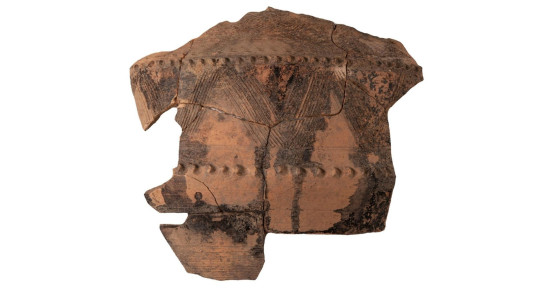
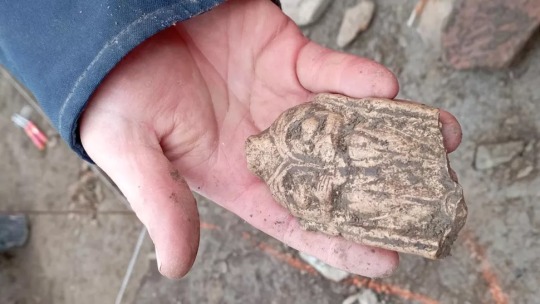
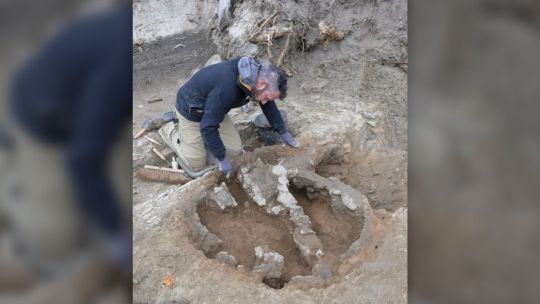


Roman-Era Trash Dump Containing Venus Statue Discovered in France
Archaeologists have found a trove of artifacts, including two statues of the goddess Venus, in a Roman-era quarry-turned-trash-dump.
Archaeologists in France have discovered a trove of up to 1,800-year-old artifacts — including statuettes of the goddess Venus, a potter's kiln, coins and clothing pins — in a rare location: a Roman shale quarry that was later repurposed into a trash pit in what is now the city of Rennes.
Located in northwest France, Rennes was founded in the first century A.D. as the Roman town Condate Riedonum. In order to create houses, walls and public buildings, a significant amount of stone was needed. Earlier this month, while excavating ahead of a development project, archaeologists with the French National Institute for Preventive Archaeological Research (Inrap) announced their discovery of a quarry that was likely instrumental in the foundation of Roman Rennes.
Just outside the northern boundary of the ancient city, archaeologists found a Roman-era rock excavation site more than 6.5 feet (2 meters) deep, laid out in stages, from which the Romans extracted slabs of schist, a metamorphic rock commonly used in ancient building construction.
"The Romans are famous for developing quarries all over the Mediterranean," Jason Farr, a Roman archaeologist at Saint Mary's University in Halifax, Canada, said in an email. Farr, an expert in ancient quarries who was not involved in the present finding, said that "most quarries in the Roman world would have been local affairs, focused on supplying building stone in bulk to nearby towns and farms. The concrete walls favored by the Romans required a great deal of stone."
When the stone was used up and the quarry abandoned in the second century A.D., it became a large trash dump. Inrap archaeologists discovered numerous fragments of pots and plates, a few coins, some clothing pins, as well as several terracotta statuettes, including two depicting Venus in different roles. Known as the goddess of love in the Roman period, Venus became closely associated with the emperors and was often symbolic of Roman power.
The quarry excavation yielded a fragment of Venus genetrix (mother-goddess) that shows her torso draped in fabric. The second, more complete example is of Venus anadyomene (rising from the sea); she is nude and, with her right hand, she wrings water out of her hair.
"Because they were so close to towns, quarries were frequently reused," Farr said. "Open pit quarries made for ideal trash dumps."
By the Medieval period (14th to 15th centuries), the Rennes quarry was completely filled in. Inrap archaeologists found the remains of wooden buildings, ovens and wells that suggest the area was reused for craft production. A 17th-century underground plumbing pipe was also found, which ran under a historically known boarding school for girls and supplied Rennes with water.
In addition to the stash of artifacts dating back centuries, the Rennes quarry is important for what it can tell archaeologists about stone extraction methods, chiseling tools and organization and management of the location during the growth of a Roman town.
"Relatively few Roman-period quarries for 'mundane' building stone have been excavated," Farr said, which is unfortunate given the key role the construction industry played in the local economy. The newly discovered Rennes quarry, he noted, "is all the more exciting because of its reuse as a trash dump, which is a veritable gold mine of information on ancient life. There really is a lot we can learn here."
By Kristina Killgrove.
#Roman-Era Trash Dump Containing Venus Statue Discovered in France#rennes#Roman town Condate Riedonum#archeology#archeolgst#ancient artifacts#history#history news#ancient history#ancient culture#ancient civilizations#roman history#roman empire#Roman-era quarry-turned-trash-dump
37 notes
·
View notes
Text

This is a 14th century miniature depiction of Roman emperors Arcadius, Honorius and Theodosius I, from the Constantine Manasses Chronicle.
Arcadius was Roman emperor from (383-408 A.D), Honorius was emperor from (393-423 A.D) and Theodosius I was emperor from (379-395 A.D).
Theodosius I, also known as Theodosius the great was the father of Honorius and Arcadius.
Arcadius governed the eastern province of the Roman empire while Honorius governed the eastern province.
These three emperors were apart of the Theodosian dynasty.
"The Theodosian dynasty was a Roman imperial family that produced five Roman emperors during Late Antiquity, reigning over the Roman Empire from 379 A.D to 457 A.D."
"The dynasty's patriarch was Theodosius the Elder, whose son Theodosius the Great was made Roman emperor in 379 A.D!"
Theodosius I was the last emperor to ruler the entire Roman Empire, until it was split into two separate provinces with a western and eastern ruler.
6 notes
·
View notes
Text
SAINT OF THE DAY (August 18)

Not much is known about Saint Helena but it is probable that she was born in the middle of the third century in Asia Minor.
She worked as a stable maid as a young woman, according to Saint Anselm.
Helena later married a young Roman official, Constantius Chlorus, who took her as wife despite their difference in social status.
In around the year 270, she gave birth to their first son, Constantine.
Constantius quickly rose in the ranks of the Roman military. Due to political reasons, he was forced to repudiate Helena and marry another.
Helena remained at a distance as she watched her son rise in the court of Diocletian.
In 305, Constantius, now Augustus, and Constantine went to Britain to fight against the Picts.
Constantine became emperor when his father died unexpectedly at York. As the new emperor, his first action was to recall his mother Helena.
Shortly after her son’s accession, Helena converted to Christianity.
Her faith moved her to care for the poor by providing for their needs through generous almsgiving.
She also worked to liberate prisoners and those sent to the mines or into exile.
Constantine’s reign took a downward turn when he ordered the death of his son and that of his second wife.
The family tragedy pushed Helena to go on a pilgrimage to the Holy Land in 326.
There, she ordered the construction of the Basilicas of the Nativity in Bethlehem and of the Ascension on the Mount of Olives.
The work was overseen by Helena whose faith was rewarded when the True Cross was discovered.
The identity of the Cross was confirmed when a dead man was laid on the wood and was miraculously restored to life.
The three nails from the Crucifixion were given by Helena to Constantine.
The date of this discovery and miracle, according to tradition, was 3 May 326 A.D.
St. Helena had a church built on the original site of Jesus’ crucifixion, burial and resurrection, known as the Church of the Holy Sepulchre.
Her son Constantine dedicated this church on September 13-14 in the year 335 A.D.
Even today, the Stations of the Cross in Jerusalem — the “Via Dolorosa” — end at this very spot.
Helena died in an unknown location in 329. Constantine had her body brought back to Rome.
—
TIMELINE OF EVENTS
326 A.D. St. Helena discovers the True Cross in Jerusalem on May 3rd.
335 A.D. Constantine dedicates the Church of the Holy Sepulcher on September 14th.
614 A.D. Jerusalem is invaded by the Persians who steal the True Cross.
629 A.D. The True Cross is recovered and brought back to Jerusalem on September 14th.
6 notes
·
View notes
Text














National Peanut Butter Day
Spread this creamy, nutty treat far and wide, experiment with mouthwatering recipes or tuck into a classic peanut butter and jelly sandwich.
Who doesn’t love peanut butter? Whether as an ingredient in a candy bar or some cookies, or simply eaten by the spoonful, pretty much everyone loves it in some way or another. And, of course, it provides the most important ingredient to one of America’s favorite quick and easy meals: the Peanut Butter and Jelly Sandwich.
So now it’s time to celebrate National Peanut Butter Day!
History of National Peanut Butter Day
Peanut butter is a culinary treat that actually most people think is a fairly modern invention, as food histories go. However, that may not be exactly the case.
I’m going to take this God-given gift of being funny, and I’m going to spread it out like peanut butter on everything I do.
Peanut butter, as it is known today, has only been around for a little over a hundred years. But, actually, there is some evidence that ancient Aztec and Inca peoples may have been grinding peanuts into a sort of paste several hundred years ago (or maybe even a few thousand years ago!).
As far as the modern world is concerned, peanut butter arrived via the United States at some time in the late 1800s. Some theories claim that, like many foods, peanut butter probably started in someone’s kitchen in their home. One popular theory suggests that a woman named Rose Davis started making peanut butter in New York at some point in the 1840s. She got the idea from her son, who had learned about something similar that was being made in Cuba at the time.
Many people credit George Washington Carver with the invention of producing peanut butter but, while he was an amazing inventor credited with more than 300 uses for peanuts and is considered the father of the peanut industry, Carver did not actually invent peanut butter.
The creation of modern peanut butter, along with its production processes, can be traced back to at least three more people. In fact, it was Canadian Marcellus Edson who patented “peanut paste” first, back in 1884, but this was created from roasted peanuts. In 1895, Dr. John Harvey Kellogg, of the famed Kellogg’s cereal company, filed to patent a process using raw peanuts to create peanut butter, which was then referred to as “nut meal”. Then, in 1903, a peanut butter-making machine was patented by Dr. Ambrose Straub of St. Louis, Missouri.
As far as National Peanut Butter Day is concerned, it seems that this auspicious occasion was created many years ago, to allow peanut butter lovers to celebrate the creation of this wonderful food. And celebration is the whole purpose of the day!
National Peanut Butter Day Timeline
14th Century A.D. Peanut butter is invented
The Incan peoples of Peru are believed to have been the first to mash up peanuts into paste and use it for food. It was more coarse than modern peanut butter (and was likely unsweetened) but was the predecessor to today’s smoother, sweeter version.
1840 Rose Davis creates modern peanut butter
A resident of New York, Rose Davis was rumored to have gotten the idea for peanut butter from her son, who had traveled to Cuba. So she started making it in her own kitchen.
1884 First peanut butter patent is granted in the United States
Marcellus Gilmore Edson was a Canadian chemist who first applied for (and was granted) a patent for a peanut paste which he called “peanut candy”. Although he held the patent, no evidence shows that he never actually made the product available commercially.
1890 Bayle’s Peanut Butter claims status as “original”
St. Louis food manufacturer, Bayle’s, is rumored to have collaborated with a doctor who was looking for ways for patients to ingest protein when they could not chew meat. This led to the production of ground peanut paste, which was originally sold from barrels for 6 cents per pound.
1928 Peter Pan becomes the first branded peanut butter
Receiving a license for his creative churning process from inventor Joseph L. Rosenfeld, Peter Pan makes its name on the market. This is followed only a few years later by Rosenfeld’s own brand, Skippy.
How to Celebrate National Peanut Butter Day
Celebrating this day can be something super simple or extra involved. No matter how it is enjoyed, Peanut Butter is the star of the show on this day! Try out some of these ideas for getting involved:
Enjoy Eating Some Peanut Butter
Peanut butter can be eaten and used in many different recipes, whether sweet or savory, baked or fried. Plus, a lot of people see nothing wrong in sitting down and indulging in a jar of the creamy or crunchy delight with a spoon. What more would a person need? Today is the day that can be best appreciated in whatever way each person’s taste buds enjoy the most.
There are some individuals who commit to eating nothing but peanut butter-themed foods on National Peanut Butter Day. There are even schools that will serve peanut butter sandwiches to their students on this festive day. What better sandwich is there in the world?
Try Some New Peanut Butter Recipes
Families and friends can celebrate National Peanut Butter Day by getting together and creating delicious recipes containing peanut butter, from cookies and cakes to sauces. These can of course be consumed at home, or some prefer to make a day of it and go on a picnic-style outing. No matter what way it is eaten, getting creative in the kitchen with peanut butter can be a whole load of fun!
Try out some of these ideas for creating peanut butter dishes:
Crispy Tofu Stir Fry with Cauliflower Rice. Super delicious and vegan (which is great for the health and the environment), this Asian inspired dish tosses cubes of tofu into a peanut butter marinade sauce after being baked and also pan fried.
African Peanut Soup. Filled with chicken, nutritious sweet potatoes and other vegetables, this peanut soup is super healthy and also delicious!
Peanut Butter Frozen Yogurt. Easier than it sounds, this recipe simply requires combining premade yogurt, peanut butter, vanilla extract and maple syrup. Place in bite-sized dollups on a parchment lined cookie sheet and freeze (or make them into popsicles). A perfectly delightful summer snack for kids and adults!
Peanut Butter and Jelly Ice Cream. Speaking of frozen treats, why not make one out of the tasty ingredients of this classic American sandwich? The combination of sweet with salty is fabulous–especially when using crunchy peanut butter!
Share Some Peanut Butter Treats
After checking to be sure there aren’t any allergies, a great way to celebrate National Peanut Butter Day is by making (or buying) and sharing a variety of treats that include peanut butter.
Take a plate of peanut butter cookies to share with coworkers at the office, create a peanut butter pie to give to the neighbors, or take a close friend out to a restaurant for a peanut butter shake! National Peanut Butter Day is certainly tasty in any way that it is celebrated, but most people will find that it is best enjoyed when shared with others!
Learn Some Facts for National Peanut Butter Day
In celebration of National Peanut Butter Day, it’s time to brush up on some interesting facts and tidbits that can be shared with friends, while also sharing a peanut butter sandwich.
Peanut Butter was officially introduced to the world at the 1904 World’s Fair in St. Louis, Missouri, USA where a businessman named George Bayle started selling it. But it still took some time to gain popularity.
The first recorded recipe for a Peanut Butter and Jelly Sandwich was in 1901. It was written by Julia Davis Chandler and published in the Boston Cooking School Magazine.
In the United States, in order for a product to be labeled as “peanut butter” it must contain at least 90% peanuts. This rule keeps the manufacturers from substituting other ingredients into the mix.
The US has elected two different peanut farmers to represent them as the President of the United States of America. These include Thomas Jefferson of Virginia (who was president between 1801 and 1809) and Jimmy Carter of Georgia (who was president between 1977 and 1981). However, since peanut butter didn’t yet exist when Jefferson was president, the peanuts grown on his farms were probably not used to make this delicious treat.
Source
#Peanut Butter Milkshake#Chocolate Peanut Butter Cup a la Mode#Peanutbutter Cream Pie#food#USA#dessert#original photography#travel#vacation#whipped cream#ice cream#Peanut Butter Cookie Butter Batter#Reese's Peanut Butter Chocolate Cake Cheesecake#Adam's Peanut Butter Cup Fudge Ripple Cheesecake#Canada#Chocolate Peanut Butter Shudder#National Peanut Butter Day#NationalPeanutButterDay#Peanut Butter Cup Perfection#homemade Heaven and Hell Cake#24 January
1 note
·
View note
Text
Nicholas Cabasilas of Thessaloniki
Reading from the Synaxarion:
Saint Nicholas Cabasilas was born in 1322 A.D. in Thessaloniki. Very little is known about his life, but he is remembered through two texts he wrote: The Life in Christ and The Exposition of the Divine Liturgy. He lived at the same time as Saint Gregory Palamas (see 11/14 and the 2nd Sunday of Great Lent) and was an ally of his during the Hesychastic Controversy on Mount Athos in the 14th century.
0 notes
Text
The 12 Most Interesting Facts about Nursing

The nursing profession is a cornerstone of the healthcare system, rich in history, filled with unique facts, and bolstered by surprising statistics that highlight its evolution and impact. Whether you’re a registered nurse, nurse practitioner, nurse’s assistant, or involved in nurse staffing, there is always more to learn about this vital field. Here, we indulge into 12 intriguing facts about nursing that might surprise even those within the industry.
1. Nursing’s Ancient Origins

The earliest records of nursing date back to 300 A.D. in the Roman Empire, where nurses operated in what were considered hospitals at the time. These early healthcare institutions, known as valetudinaria, provided care primarily to soldiers and slaves. Nursing during this period was rudimentary and primarily focused on basic care and comfort.
The practice of nursing evolved significantly during the Middle Ages. Monastic orders, particularly in Europe, took on the role of caregivers. Monks and nuns provided care in hospices and infirmaries, laying the groundwork for modern nursing. The evolution continued with the establishment of more structured medical and nursing practices in response to the Black Death in the 14th century. These historical roots underscore the longstanding tradition of compassion and care in nursing.
2. Florence Nightingale’s Pioneering Influence

Florence Nightingale, often referred to as the founder of modern nursing, played a major role in transforming the profession. Born into a wealthy British family, Nightingale defied societal expectations to pursue a career in nursing. Her work during the Crimean War (1853–1856) brought her international acclaim. She was appalled by the unsanitary conditions and high mortality rates in military hospitals and implemented rigorous hygiene practices, significantly reducing the death rate.
Nightingale’s contributions extended beyond the battlefield. She established the Nightingale Training School for Nurses in 1860 at St. Thomas’ Hospital in London, emphasizing the importance of formal education and training for nurses. Her book, “Notes on Nursing: What It Is and What It Is Not,” became a seminal text in nursing education. Nightingale’s legacy includes her pioneering use of statistical analysis to advocate for healthcare reform, showcasing the impact of evidence-based practice.
3. The First Nursing School
The establishment of the Bellevue Hospital School of Nursing in New York City in 1873 marked a significant milestone in American nursing history. Inspired by Florence Nightingale’s principles, the school offered a one-year program that combined theoretical instruction with practical experience. This model set the standard for future nursing education.
Bellevue’s success prompted the establishment of other nursing schools, such as the New England Hospital for Women and Children (now part of the Boston Medical Center) and Massachusetts General Hospital’s nursing school. These institutions played a crucial role in professionalizing nursing and raising the standards of patient care. The emphasis on rigorous training and education helped transform nursing into a respected and essential profession.
4. The Physical Demands of Nursing
Nurses are known for their dedication and hard work, but the physical demands of the profession are often underestimated. On average, nurses walk four to five miles during a typical 12-hour shift, which is double the daily walking distance of most people. This constant movement is necessary to provide timely and effective care to patients, but it also highlights the physical challenges nurses face.
The demanding nature of nursing underscores the importance of proper footwear and ergonomics in the workplace. Comfortable, supportive shoes can help prevent injuries and reduce fatigue, enabling nurses to perform their duties effectively. Additionally, the physical activity associated with nursing contributes to overall health, but it also necessitates a focus on self-care and occupational health strategies to mitigate the risk of long-term musculoskeletal issues.
5. Dominance in Healthcare Education
Nursing is a dominant field within healthcare education, with approximately 50% of students in healthcare-related programs pursuing nursing degrees. This significant representation reflects the critical role nurses play in the healthcare system. The demand for nursing education has led to the development of numerous undergraduate and graduate programs, offering specialized training in various areas such as pediatric nursing, geriatric nursing, and critical care.
The strong support network among nursing students and professionals fosters a collaborative learning environment. Nursing programs emphasize not only clinical skills but also the development of critical thinking, communication, and leadership abilities. This comprehensive approach ensures that nursing graduates are well-prepared to meet the diverse and complex needs of patients.
6. Top Nursing Jobs
Nursing offers a wide range of career opportunities, and several nursing roles are consistently ranked among the top jobs in the United States. According to U.S. News & World Report, three nursing roles were among the top 40 jobs in 2021: registered nurses (ranked 37th), nurse anesthetists (ranked 39th), and nurse practitioners (ranked 3rd).
These rankings highlight the diverse and lucrative opportunities within the nursing profession. Registered nurses (RNs) are the backbone of healthcare, providing essential care and coordination in various settings. Nurse anesthetists, who administer anesthesia and monitor patients during surgical procedures, are highly specialized and command competitive salaries. Nurse practitioners (NPs) have advanced training that allows them to diagnose and treat medical conditions, often serving as primary care providers. The high ranking of NPs reflects the growing recognition of their critical role in expanding access to healthcare.
7. Mary Eliza Mahoney’s Legacy
Mary Eliza Mahoney, the first African American registered nurse in the United States, broke significant barriers in the field of nursing. Born in 1845 in Boston, Mahoney worked at the New England Hospital for Women and Children for 15 years before enrolling in its nursing program. She graduated in 1879, becoming one of only three graduates out of a class of 42.
Mahoney’s accomplishments extend beyond her personal achievements. She co-founded the National Association of Colored Graduate Nurses (NACGN) in 1908, advocating for the inclusion and recognition of African American nurses. The NACGN played a crucial role in supporting black nurses and promoting racial equality in the profession. Mahoney’s legacy is a testament to her resilience, dedication, and pioneering spirit, which continue to inspire nurses today.
8. The U.S. Nursing Workforce
As of 2020, there were approximately three million nurses in the United States, comparable to the population of Jamaica. This vast workforce is essential to the functioning of the healthcare system. Nurses work in a variety of settings, including hospitals, clinics, long-term care facilities, schools, and community health centers.
Globally, there are over 28 million nurses, accounting for 59% of healthcare professionals worldwide. This significant presence underscores the critical role nurses play in delivering healthcare services. However, the global nursing workforce faces challenges such as shortages, particularly in low- and middle-income countries. Efforts to address these shortages include increasing educational opportunities, improving working conditions, and supporting international collaboration.
9. Projected Growth in Nursing
The nursing field is not only large but also poised for continued growth. According to the U.S. Bureau of Labor Statistics, the employment of registered nurses is projected to increase by 7% from 2019 to 2029. This growth is driven by several factors, including an aging population, increased prevalence of chronic diseases, and expanded access to healthcare services.
The projected growth in nursing offers substantial opportunities for those entering the profession. It also underscores the importance of supporting nursing education and training programs to meet the demand for skilled nurses. Healthcare organizations and policymakers must invest in initiatives that attract and retain nurses, ensuring a robust workforce to provide high-quality care.
10. Diverse Work Environments
While hospitals remain the largest employer of nurses, the nursing profession offers diverse work environments. According to data from the U.S. Bureau of Labor Statistics, the distribution of nurses across various settings is as follows:
Hospitals: 60%
Ambulatory healthcare services: 18%
Nursing and residential care facilities: 7%
Government: 5%
Educational services: 3%
This diversity allows nurses to work in a range of settings, each with its unique challenges and opportunities. Ambulatory healthcare services include outpatient clinics, surgical centers, and primary care practices, where nurses play a vital role in patient care and health promotion. Nursing and residential care facilities provide long-term care for individuals with chronic illnesses or disabilities, emphasizing the importance of compassionate, ongoing support. Government and educational services offer roles in public health, policy, research, and academia, contributing to the advancement of the profession and the improvement of public health.
11. National Nurses Week
National Nurses Week, celebrated annually from May 6 to May 12, honors the challenging work and dedication of nurses. Established over 40 years ago, this week-long celebration culminates on May 12, the birthday of Florence Nightingale. The week recognizes the significant contributions of nurses to healthcare and society.
National Nurses Week includes various events and activities to celebrate and appreciate nurses. These may include educational seminars, award ceremonies, community outreach programs, and public awareness campaigns. The celebration provides an opportunity to highlight the vital role of nurses, advocate for their needs, and inspire the next generation of nursing professionals.
12. Staffing Agencies and Nursing Employment
Nurse staffing agencies play a crucial role in addressing the fluctuating demand for nursing services. Many nurses find employment through staffing agencies, which help them secure jobs and new opportunities. These agencies match nurses with healthcare facilities that need additional staff, ensuring that patient care remains uninterrupted.
For staffing agencies, keeping pace with the rising demand for nurses is crucial. Solutions like invoice factoring can provide the necessary funding to grow and support their operations effectively. Invoice factoring allows agencies to sell their accounts receivable at a discount in exchange for immediate cash, helping them manage cash flow and invest in recruiting and retaining qualified nurses.
Conclusion
These facts not only highlight the rich history and essential role of nursing but also underscore the profession’s ongoing evolution and the increasing opportunities within the field. Whether you’re a nurse or involved in nursing services, staying informed about these developments is key to advancing in this vital industry. The nursing profession continues to grow and adapt, driven by a commitment to providing high-quality care and improving patient outcomes.
For those involved in nurse staffing, understanding the dynamics of the nursing workforce and exploring financial solutions like invoice factoring can help meet the rising demand and ensure continued success. By recognizing the historical significance, current trends, and future prospects of nursing, we can better support and celebrate this indispensable profession.
For medical students and nurses of all categories, navigating assignments, homework, case studies, research, online classes, and challenging medical units can be daunting. Seeking professional guidance and assistance can make a significant difference in your academic and professional journey. For expert help with these challenges, consider reaching out to Expert Academic Assignment Help at [email protected] Our professional support can help you excel in your studies and career.
#medical students#healthcare#assignment help#nursing student#nursing school#medicine#public health#health and wellness#medical school#medical student#medicare#medical university#university#writters on tumblr#case study#study blog#studyblr#student life#student#studyspo#study motivation#study aesthetic#studying#phd research#clinical research#research#research paper
0 notes
Text
The Middle Ages (800 A.D. – 1400)
In 800 to 1000 A.D., the Vikings reached North America, opening new opportunities and resources for new marine technology.
The Islamic Gold Age, (8th - 14th century) made many scientific advancements in navigation and cartography.
By the 11th century, magnetic compasses had been adapted to be used for navigation, as reported by Alexander Neckam.
By the 12th century, people began to employ tidal mills in coastal regions.
The earliest mention of the mariners' astrolabe dates back to 1295, offered by the Majorcan astronomer Ramon Llull

Portrait of Ramon Llul
0 notes
Text
(frightful 14th century ghoul jumpscare warning)
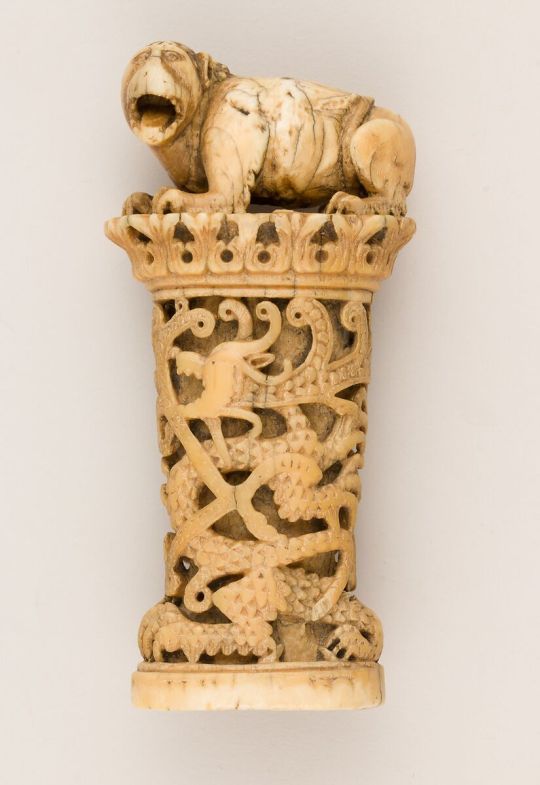
Thats just somebody's knife handle. I don't know what that beast thing is but this is just how rich people designed everything between 300 A.D and 1600 A.D.
0 notes
Note
Friendly, well, they aren't hostile.
They discovered how to send their spirit through time and switch minds with intelligent people in different ages.
While the Yith live in a different age in a different body they get as much information about everything as they can, while the person in the body of the Yith is encouraged to write down as much knowledge as they have.
After everything is done they get switched back.
But the Yith do not maltreat their guests.
Usually, since the people who's minds get swapped are intelligent and often scientists, they don't seem to mind it too much, especially since they also get the chance to talk with people from different times as well.
I talked with the mind of Yiang-Li, a philosopher from the cruel empire of Tsan-Chan, which is to come in 5,000 A.D.; with that of a general of the greatheaded brown people who held South Africa in 50,000 B.C.; with that of a twelfth-century Florentine monk named Bartolomeo Corsi; with that of a king of Lomar who had ruled that terrible polar land one hundred thousand years before the squat, yellow Inutos came from the west to engulf it.
I talked with the mind of Nug-Soth, a magician of the dark conquerors of 16,000 A.D.; with that of a Roman named Titus Sempronius Blaesus, who had been a quaestor in Sulla's time; with that of Khephnes, an Egyptian of the 14th Dynasty, who told me the hideous secret of Nyarlathotep, with that of a priest of Atlantis' middle kingdom; with that of a Suffolk gentleman of Cromwell's day, James Woodville; with that of a court astronomer of pre-Inca Peru; with that of the Australian physicist Nevil Kingston-Brown, who will die in 2,518 A.D.; with that of an archimage of vanished Yhe in the Pacific; with that of Theodotides, a Greco-Bactrian official Of 200 B.C.; with that of an aged Frenchman of Louis XIII's time named Pierre-Louis Montagny; with that of Crom-Ya, a Cimmerian chieftain of 15,000 B.C.; and with so many others that my brain cannot hold the shocking secrets and dizzying marvels I learned from them.
They sound friendly to me! And what a great way to meet new friends and swap ideas!
0 notes
Text

2/12/24 The Truth Behind St. Valentine’s Day Long but worth the read. February 14, 2024 St. Valentine’s Day is the world’s “holiday of love.” Since the Bible states that God is love (I John 4:8, 16), does He approve of the celebration of this day? Does He want His people—true followers—partaking of the candy and cards, or any customs associated with this day?
When God says He wants you to live life abundantly (John 10:10), does that include celebrating a festive, seemingly harmless holiday like Valentine’s Day? The God who gives us everything—life, food, drink, the ability to think for ourselves, etc.—surely approves of St. Valentine’s Day, the holiday for lovers to exchange gifts—right?
Do not be so certain. Do not assume anything. Do not even take this article’s word for it. Go to history books and encyclopedias. Go to the Bible. Then you will know the real truth behind St. Valentine’s Day. And you will know what God expects you to do about it!
Valentine’s Past Like Christmas, Easter, Halloween, New Year’s and other holidays of this world, St. Valentine’s Day is another attempt to “whitewash” perverted customs and observances of pagan gods and idols by “evangelizing” them.
As innocent and harmless as St. Valentine’s Day may appear, its traditions and customs originate from two of the most sexually perverted pagan festivals of ancient history: Lupercalia and the feast day of Juno Februata.
Celebrated on February 15, Lupercalia (known as the “festival of sexual license”) was held by the ancient Romans in honor of Lupercus, god of fertility and husbandry, protector of herds and crops, and a mighty hunter—especially of wolves. The Romans believed that Lupercus would protect Rome from roving bands of wolves, which devoured livestock and people.
Assisted by Vestal Virgins, the Luperci (male priests) conducted purification rites by sacrificing goats and a dog in the Lupercal cave on Palatine Hill, where the Romans believed the twins Romulus and Remus had been sheltered and nursed by a she-wolf before they eventually founded Rome. Clothed in loincloths made from sacrificed goats and smeared in their blood, the Luperci would run about Rome, striking women with februa, thongs made from skins of the sacrificed goats. The Luperci believed that the floggings purified women and guaranteed their fertility and ease of childbirth. February derives from februa or “means of purification.”
To the Romans, February was also sacred to Juno Februata, the goddess of febris (“fever”) of love, and of women and marriage. On February 14, billets (small pieces of paper, each of which had the name of a teen-aged girl written on it) were put into a container. Teen-aged boys would then choose one billet at random. The boy and the girl whose name was drawn would become a “couple,” joining in erotic games at feasts and parties celebrated throughout Rome. After the festival, they would remain sexual partners for the rest of the year. This custom was observed in the Roman Empire for centuries.
Whitewashing Perversion In A.D. 494, Pope Gelasius renamed the festival of Juno Februata as the “Feast of the Purification of the Virgin Mary.” The date of its observance was later changed from February 14 to February 2, then changed back to the 14. It is also known as Candlemas, the Presentation of the Lord, the Purification of the Blessed Virgin and the Feast of the Presentation of Christ in the Temple.
After Constantine had made the Roman church’s brand of worshipping the official religion of the Roman Empire (A.D. 325), church leaders wanted to do away with the pagan festivals of the people. Lupercalia was high on their list. But the Roman citizens thought otherwise.
It was not until A.D. 496 that the church at Rome was able to do anything about Lupercalia. Powerless to get rid of it, Pope Gelasius instead changed it from February 15 to the 14th and called it St. Valentine’s Day. It was named after one of that church’s saints, who, in A.D. 270, was executed by the emperor for his beliefs.
According to the Catholic Encyclopedia, “At least three different Saint Valentines, all of them martyrs, are mentioned in early martyrologies under the date of 14 February. One is described as a priest at Rome, another as bishop of Interamna (modern Terni), and these two seem both to have suffered in the second half of the third century and to have been buried on the Flaminian Way, but at different distances from the city…Of the third Saint Valentine, who suffered in Africa with a number of companions, nothing is further known.” Several biographies of different men named Valentine were merged into one “official” St. Valentine.
The church whitewashed Lupercalia even further. Instead of putting the names of girls into a box, the names of “saints” were drawn by both boys and girls. It was then each person’s duty to emulate the life of the saint whose name he or she had drawn. This was Rome’s vain attempt to “whitewash” a pagan observance by “worshipping” it, which God has not given man the power or authority to do. Though the church at Rome had banned the sexual lottery, young men still practiced a much toned-down version, sending women whom they desired handwritten romantic messages containing St. Valentine’s name. Over the centuries, St. Valentine’s Day cards became popular, especially by the late eighteenth and early nineteenth centuries. These cards were painted with pictures of Cupid and hearts, and meticulously decorated with lace, silk or flowers.
First Man Called Valentine But who was the original Valentine? What does the name Valentine mean? Valentine comes from the Latin Valentinus, which derives from valens—“to be strong, powerful, mighty.”
The Bible describes a man with a similar title: “And Cush begat Nimrod: he began to be a mighty one in the earth. He was a mighty hunter before the LORD: wherefore it is said, Even as Nimrod the mighty hunter before the LORD” (Gen. 10:8-9). He was said to have hunted with bow and arrow.
As mentioned, the Romans celebrated Lupercalia to honor the hunter god Lupercus. To the Greeks, from whom the Romans had copied most of their mythology, Lupercus was known as Pan, the god of light. The Phoenicians worshipped the same deity as Baal, the sun god. Baal was one of many names or titles for Nimrod, a mighty hunter, especially of wolves. He was also the founder and first lord of Babel (Gen. 10:10-12). Defying God, Nimrod was the originator of the Babylonian Mystery Religion, whose mythologies have been copied by the Egyptians, the Greeks, the Romans and a multitude of other ancient peoples.
Under different names or titles—Pan, Lupercus, Saturn, Osiris—Nimrod is the strong man and hunter-warrior god of the ancients.
But what does the heart symbol have to do with a day honoring Nimrod/Valentine?
The title Baal means “lord” or “master,” and is mentioned throughout the Bible as the god of pagans. God warned His people not to worship or even tolerate the ways of Baal (Nimrod). In ancient Chaldean (the language of the Babylonians), bal, which is similar to Baal, meant, “heart.” This is where the Valentine heart symbol originated.
Now notice the name Cupid. It comes from the Latin verb cupere, meaning “to desire.” Cupid was the son of Venus, Roman goddess of beauty and love. Also known as Eros in ancient Greece, he was the son of Aphrodite. According to myth, he was responsible for impregnating numerous goddesses and mortals. Cupid was a child-like archer (remember, Nimrod was a skilled archer). Mythology describes Cupid as having both a cruel and happy personality. He would use his invisible arrows, tipped with gold, to strike unsuspecting men and women, causing them to fall madly in love. He did not do this for their benefit, but to drive them crazy with intense passion, to make their lives miserable, and to laugh at the results. Many of the gods of the Egyptians, Greeks, Romans, Assyrians and others were modeled after one man—Nimrod.
But what does this have to do with us today? Why should we be concerned with what happened in the past?
What God Thinks Read what God commands His people concerning pagan customs and traditions: “Learn not the way of the heathen…For the customs of the people are vain” (Jer. 10:2-3). Also notice Christ’s words in Matthew 15:9: “…in vain they do worship Me, teaching for doctrines the commandments of men.”
Throughout the Bible, God describes “heathens” as those who worship things that He had created (animals, the sun, the moon, stars, trees, etc.), or man-made idols, or anything but the one true God. He calls such people and their practices pagan. True followers of Yesua understand that God hates any customs, practices and traditions that are rooted in paganism.
But just how serious is God about paganism?
When He rescued the twelve tribes of Israel from brutal slavery and led them out of Egypt, He commanded them, “After the doings of the land of Egypt, wherein you dwelt, shall you not do: and after the doings of the land of Canaan, where I bring you, shall you not do: neither shall you walk in their ordinances” (Lev. 18:3). God demanded the Israelites not to defile themselves with the pagan practices and customs of surrounding nations (vs. 24-29). “Therefore shall you keep Mine ordinance, that you commit not any one of these abominable customs, which were committed before you, and that you defile not yourselves therein: I am the LORD your God” (vs. 30).
God cursed Egypt—a nation of nature-worshiper—with ten plagues and freed Israel from slavery. He rescued Israel from Pharaoh’s army by parting the Red Sea and leading His people to safety. He fed the Israelites manna—special bread made by God—from heaven. He protected them from battle-tested Gentile armies, delivered them into the Promised Land and drove out their enemies.
How did Israel treat God in return? “Our fathers understood not Your wonders in Egypt; they remembered not the multitude of Your mercies; but provoked Him at the sea, even at the Red Sea…They soon forgot His works; they waited not for His counsel: But lusted exceedingly in the wilderness, and tempted God in the desert…They made a calf in Horeb, and worshiped the molten image. Thus, they changed their glory into the similitude of an ox that eats grass. They forgot God their Savior, which had done great things in Egypt; wondrous works in the land of Ham, and terrible things by the Red Sea…they despised the pleasant land, they believed not His word: But murmured in their tents, and hearkened not unto the voice of the LORD …They joined themselves also unto Baal-peor, and ate the sacrifices of the dead. Thus they provoked Him to anger with their intentions” (Psa. 106:7, 13-14, 19-22, 24-25, 28-29).
God explicitly commanded Israel to cast out and utterly destroy all nations that occupied the Promised Land (Canaan). Above all, His people were not to make political alliances with them or marry into their families (Deut. 7:1-3, 5, 16). “For they will turn away your sons from following Me, that they may serve other gods” (vs. 4).
But the Israelites thought they knew better than God. They decided to do things their own way. “They did not destroy the nations, concerning whom the LORD commanded them: But were mingled among the heathen, and learned their works. And they served their idols: which were a snare unto them. Yes, they sacrificed their sons and their daughters unto devils [demons], and shed innocent blood, even the blood of their sons and of their daughters, whom they sacrificed unto the idols of Canaan: and the land was polluted with blood. Thus were they defiled with their own works, and went a whoring with their own inventions” (Psa. 106:34-39).
To wake them up and get them back on track as the model nation He had originally intended, God gave Israel over to their enemies. Israel repented and cried out to God. God rescued them. With their bellies full and lives protected, the Israelites went back to pursuing other gods. God punished Israel again. Israel repented and cried out to God.
And so went the deliverance-idolatry-punishment-repentance cycle (vs. 40-46), until finally, God had no other choice but to divorce unfaithful Israel (Jer. 3:6-11).
He used the Assyrians, one of the most brutal warrior nations in history, to invade, conquer, enslave and relocate the entire northern kingdom of Israel (II Kings 17). Having “disappeared” from history, the modern-day descendants of those ten “lost” tribes are unaware of their true identity even to this day.
Later, God sent the southern kingdom of Judah (mainly the tribes of Judah, Benjamin and Levi) into Babylonian exile (II Kings 24 and 25). Because they kept (at least physically) the true Sabbath, which is a special sign that identifies the one true God and His people (Ex. 31:12-18), the Jews were able to retain their true identity.
The Israelites were severely punished because they lusted after pagan customs, rituals, traditions and practices. As you can see, God does not take paganism lightly.
Why Paganism Is Wrong Just why does God hate anything that resembles pagan customs? Is it possible to “whitewash” or “evangelizing” pagan practices and make them clean? Is it okay to practice pagan customs as long as you “worship God”?
Notice what God says in Leviticus chapter 18. After rescuing Israel from slavery, God warned them not to practice the customs they had picked up in Egypt, or learn the ways, customs and traditions of the Gentile nations that they would encounter in the Promised Land (vs. 1-3). Instead, God commanded Israel to follow His ways (vs. 4-5).
God then describes the pagan ways of these ungodly nations in great detail. In verses 7-20, He condemns all kinds of heterosexual sex relations that fall outside the holy boundaries of marriage—incest, fornication, adultery, etc. In verses 22-23, God condemns homosexuality and bestiality. Together, these sins break down and destroy the family unit that God had so lovingly created and instituted.
Notice what God links to these perversions: “And you shall not let any of your seed [children] pass through the fire to Molech, neither shall you profane the name of your God: I am the LORD” (vs. 21). God ties in the perverse sexual practices of ungodly, pagan nations with human sacrifices—parents offering the lives of their children to pagan gods!
The Bible shows that Israel not only disobeyed God and wholeheartedly embraced the sexual immorality of the Gentiles, they even went a step further.
“And they have turned unto Me the back, and not the face: though I taught them, rising up early and teaching them, yet they have not hearkened to receive instruction. But they set their abominations in the house [the temple at Jerusalem], which is called by My name, to defile it. And they built the high places of Baal, which are in the valley of the son of Hinnom, to cause their sons and their daughters to pass through the fire unto Molech; which I commanded them not, neither came it into My mind, that they should do this abomination, to cause Judah to sin” (Jer. 32:33-35). (To learn more about these child sacrifices to Molech, download from our website our sermon Santa Claus is Molech and our booklets The True Origin of Christmas and The True Origin of Easter.)
Imagine. Israel committed a sin so vile, so disgusting, that it even shocked God! But that was then. What about today? Surely, parents do not sacrifice their children to pagan gods today—or do they?
Do not be so certain. Perhaps their lives are not being sacrificed—but what about their innocence?
Parents today expect their little ones to “fall in love” and have boyfriends and girlfriends. They think it is “cute” when little boys and girls hold hands and act like a couple, sneaking a kiss or two when no one is watching. Some parents get worried when their kids do not show romantic interest in the opposite sex. They constantly ask them, “Do you have a boyfriend yet?” or “Who’s your girlfriend?”
Yet these same parents are surprised when their teen-aged “little girl” gets pregnant. Or catches a sexually transmitted disease. Or gets an abortion behind their back.
St. Valentine’s Day is just one of many tools the “god of this world” (II Cor. 4:4) uses to get parents to sacrifice the innocence of their children.
When little boys and girls draw each other’s names in a lottery and send Valentine cards and gifts to each other, declaring their “love,” they are learning the first stages of intimate relations that the Creator God designed specifically for emotionally mature adults. Instead of embracing the carefree innocence of youth, growing up without the headaches and heartaches of adulthood (finding a job, paying bills, marriage, raising a family, etc.), children today are taught to lust after each other. They are caught up in a daily drama of “If-you-loved-me-you’d-sleep-with-me; I’m-pregnant; It’s-not-mine, she-had-an-abortion.” By the time they reach adulthood, virtually every shred of innocence, sincerity and moral decency has been stripped from them. Emotionally drained, they have world-weary, “been there, done that” attitudes. And their lives are just beginning.
This is why we live in a world where a teen-aged virgin is a rare find. Where what used to be called “shacking up” and “living in sin” is now simply “living together.” Where sex is nothing more than meaningless physical recreation—no emotional attachments, no cares, no concerns. Where people change sex partners as conveniently as they change clothes. Where unmarried twenty- or thirty-something’s have had at least five sexual partners—and that is considered a low number, especially in the United States. Where men are not referred to as “my husband,” or “my fiancé,” but as “my second baby’s father.” How pathetic!
Satan has deceived the whole world (Rev. 12:9) in multiple ways—especially when it comes to intimate relationships. St. Valentine’s Day is just one of his tools for deception. (To learn more about this great deceiver, read Who Is the Devil?)
“Come Out of Her, My People” Concerning the near future, when man’s Satan-influenced world is about to collapse, God declares, “Babylon the great is fallen, is fallen, and is become the habitation of devils [demons], and the hold of every foul spirit, and a cage of every unclean and hateful bird. For all nations have drunk of the wine of the wrath of her fornication, and the kings of the earth have committed fornication with her, and the merchants of the earth are waxed [increased] rich through the abundance of her delicacies” (Rev. 18:2-3).
Concerning this pagan, satanic system, God commands true followers of Yeshua, “Come out of her, My people, that you be not partakers of her sins, and that you receive not of her plagues” (vs. 4).
St. Valentine’s Day originates from the ancient paganism of this Satan-influenced world. It is designed to deceive mankind by appealing to fleshly, carnal desires—or, as the Bible calls them, the works of the flesh.
“Now the works of the flesh are manifest [made obvious], which are these; Adultery, fornication, uncleanness, lasciviousness, idolatry…drunkenness, reveling, and such like” (Gal. 5:19-21). Do any of these sound like Lupercalia to you?
Ultimately, “they which do such things shall not inherit the kingdom of God.” A true follower of Yeshua is focused on God’s soon-coming kingdom (Matt. 6:33) and the world to come—not on the fleshly cravings of this world. A true follower of Yeshua must strive to “put off the old man” and actively imitate the perfect, righteous example of Jesus Christ. A follower of Yeshua knows that he must actively come out of this world, out of its pagan-infested customs, practices and traditions.
Followers of Yeshua do not celebrate St. Valentine’s Day!
Have a blessed day and weekend. May Yeshua the Messiah bless you, Love, Debbie
0 notes